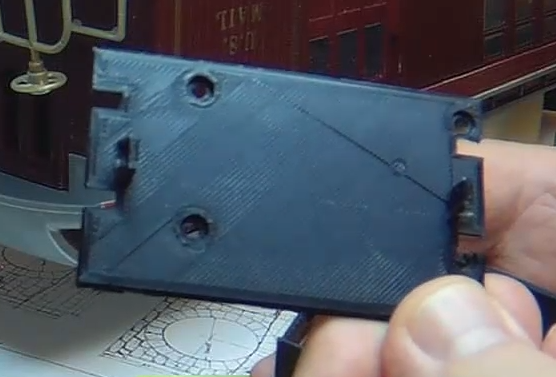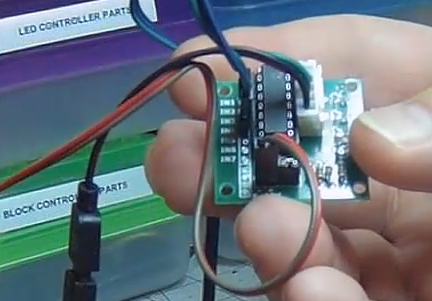The Initial Prototype - Our First Cut
We started out with nothing but a Bachmann ten wheeler and a couple of passenger cars. I always enjoy having the lights in the passenger cars, but there are only the two incandescent bulbs, powered by a 9V battery. I may have kept a few of those batteries on hand for my transistor radio in the distant past, but those days are long gone. I wanted something that not only lasted longer than the few hour lifetime of 9V batteries, but also much more brightness than two bulbs provide.
We found nothing available to replace the "archaic" 9V system with modern technology. A rechargeable 9V battery comes in around $20, an expensive proposition just to avoid having to throw away batteries that last maybe a few operating sessions. Even so, the short running time between charges is not an improvement, not to mention it would do nothing to solve the brightness issue.
The LED strip kits we bought for illuminating the station platform were bright enough to be seen in broad daylight, using just a small 12V power supply. It powered a full sixteen feet (five meters) of LEDs at once. The set even came with a remote control. We were intrigued. How could this technology be leveraged to replace those dim bulbs?
Reverse engineering them with the oscilloscope, it uses a simple Pulse WIdth Modulation (PWM) technique to control each of the three primary color LEDs on the strip. By mixing various amounts of red, green, and blue, just about any shade of color and brightness level can be obtained. The brain box that comes with it has some rudimentary effects built in, like color fade and jump. It even provides a custom color mode for fixed levels, just what we need for that old time, warm white station platform lighting.
The motor controller our son, Nick, put together for his Lionel trains was easily modified to act as the PWM controller for a dedicated LED strip in the passenger cars. It uses an Arduino based WiFi capable microcontroller, so no need for a dedicated remote control, like those we're always losing between the seat cushions. It acts as a miniature web server, serving up the user interface to any browser. Any web browser capable device can control it, like the smart cell phone most of us already have in our pocket. Or a tablet. Or a laptop. Even a desktop computer. Any browser enabled device.
Our entire controller, not including the battery, is around $20. Sound interesting? We thought so... So much so, that we've built many different types of controllers around this same core technology. In addition to these lighting controllers, we have a number of motor controllers based on the same Arduino device. The idea is to simply change out the user interface and configuration files based on the application. Simply add the necessary libraries and we're done.
The prototype LED strip lighting used 5050 LED strips which require a 12V supply and a driver to operate them. After a number of failed attempts to shoehorn those electronics into that single box along with everything else, it was apparent they would need to go elsewhere. It's one thing to have everything working laid out on the workbench, but quite another to pack it all into the limited space in the passenger cars.
A couple of iterations later, we have a 3D printed battery box that will snap in place of the original, and only slightly larger in each dimension. We fitted some passenger cars with the prototype electronics and ran them around the Barkyard to put them to the test. They did well enough, even with the subdued brightness levels we had to use due to limitations of the boost converters we used for the supply voltages.
After a few accidents, what we'll call "dragging equipment" failures, it was obvious the battery box design was the limiting factor. Back to the drawing board! The battery box is only one of several issues we addressed in our Next Generation Passenger Car Lighting Controller. Another drawback was lack of "addressability". For example, on a combination car, there was no way to control the baggage and passenger compartments independently.
Our prototype was a major step in the right direction, but we wanted MORE! More features. More effects. Greater reliability. And we want all of that using fewer parts. Our
Next Generation Passenger Car Lighting Controller does it all and more.
See More...
We invite you to enjoy our Passenger Car Lighting series on the Barkyard YouTube channel if you're so inclined. We go into much more detail than we could possibly fit on a
web page. Even our Barkyard Blog posts can't capture all the details the videos do.
View Now...






